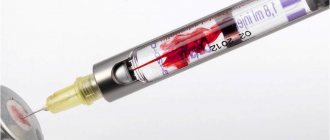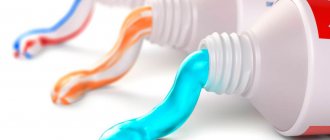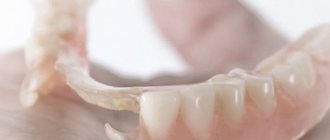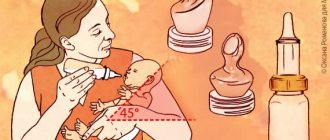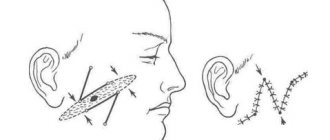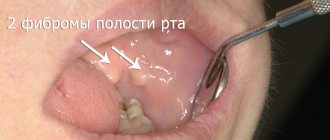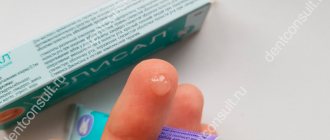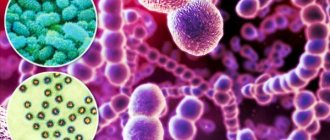1131
Obturators are prosthetic structures or devices designed to close or “clog” pathological defects in the walls of the oral cavity.
Most often, obturators are used to eliminate defects in which a violation of the communication between the oral cavity and the nose is diagnosed.
Doctors resort to fixing such products only if it is impossible to eliminate the defect with plastic surgery, or when the patient refuses surgical treatment.
Historical component
Attempts to separate the RP and the nose in case of palate defects were made by dentists back in the 14th century. The first obturator was made of leather, cotton wool, wax and a sponge, which was pressed into a hole in the roof of the mouth.
By mid-1565, Alexander Petronius had invented gold plates for these purposes, and the Dutchman Laure Becom proposed designs made of silver and ivory.
In France in those years they also tried to find a way to eliminate palate defects. Leading surgeon Ambroise Pare created 2 types of obturators. One design looked like a cuff cufflink with a wide and narrow part. The first covered the palate defect, and the second fixed the prosthesis in the cleft, relying on the nasal passages and palatine processes. The narrow part also served as a base for the sponge.
Another type of obturator was made in the form of a plate of silver or gold. A sponge was attached to the back of the product using a clamp. The plate covering the defect was held firmly in place by the swelling of the sponge.
After several uses of such obturators, doctors came to the conclusion that the sponge creates a bacterial environment in the oral cavity, because it absorbs saliva and mucous nasal secretions.
Interestingly, the French surgeon considered the main purpose of installing such structures to be to improve speech functions in cleft palate . He tried to find an effective solution to this problem, which is still the main problem with congenital nonunions of the palate.
Pare's otodontic apparatus was modified by Fauchard in the 17th century. On the plate, instead of a sponge, movable ivory wings appeared. The structure was fixed by inserting the wings into the nasal cavity vertically and then moving them to a horizontal position using a screw.
In 1796 the device was improved. It used a wire ligature as a fixation system.
Designs used
The ability to manufacture more effective and convenient obturators appeared only in the 19th century. Devices that fully correspond to the shape of the palate and the edges of the defect began to be created from rubber, rubber and gutta-percha.
The following options have been proposed for the soft palate:
- Kingsley apparatus with movable connection of parts (1864).
- Schiltsky obturator with a long plate, a rear spring and an obturating part made of soft rubber (1885).
- Inelastic construction of Suersen, used in the absence of muscles of the soft palate or in case of their atrophy (1867).
- Khrushchev's obturators - hard and with a pneumatic soft balloon (1884).
- Case's claspless "floating" apparatus (1902).
The pioneer of maxillofacial orthopedics, as an independent branch in dentistry, was K. Marten after describing a new design that replaced a jaw defect and opened up unique opportunities for successful prosthetics.
At the moment, dentistry has in its arsenal a large number of varieties of obturators. The components of any of the models are made according to the obtained palatal impression.
Yamahachi artificial teeth from a Japanese manufacturer.
Come here for a closer look at palateless dentures.
At this address https://www.vash-dentist.ru/protezirovanie/semnyie-p/pri-chastichnom-otsutstvii-zubov.html you will find detailed information about the types of dentures for partial absence of teeth.
Zygomatic implants and palatal obturators in pediatric dentistry practice
As a result of congenital defects of the upper jaw, an anastomosis can form between the nasal cavity and the oral cavity. This, in turn, compromises not only the process of adequate chewing of food, but also disrupts the functions of swallowing and speech, provokes regurgitation of fluid through the nose and complicates the conditions for proper aesthetic rehabilitation of the patient. The choice of treatment method in such cases is the subject of much discussion, and data regarding the specifics of the recovery of such pathologies, justified by certain specific results of rehabilitation, have not yet been collected.
A free microvascularized graft is often used to close maxillary defects in adults, while for children it is recommended to use a suitable obturator for the same purpose. The use of a free graft in children is limited by the need for additional surgical interventions, whereas obturators can provide optimal closure of the defect until a period when iatrogenic surgical procedures can be performed with minimal risk to the patient.
An obturator is a prosthetic design made to close the anastomosis with the nasal cavity in order to ensure the normalization of chewing and speech functions in a child patient. In patients with teeth, the latter can be used as retention points to stabilize the obturator. On the other hand, such a prosthesis can also be retained due to design features that restore undercut areas in the area of the defect. For additional support of the obturator, dental implants can also be used, which are installed in the area of the residual alveolar ridge. If the defect size is significant, zygomatic intraosseous supports are used for the same purpose.
The literature describes cases of retention of the obturator design on two, three or even four zygomatic implants after bilateral resection of the upper jaw. Information regarding the use of zygomatic implants to support prostheses replacing a unilateral defect of the upper jaw has not yet been found in the literature. It is logical that in such cases it would be most appropriate to use two zygomatic implants, onto which a beam would be fixed as a supra-element. On the other hand, if you use conventional implants for this purpose, then practically no questions arise regarding the specifics of treatment, while the use of zygomatic analogues is complicated by certain clinical features.
The zygomatic implant for the restoration of post-oncological defects (Southern Implants Ltd, South Africa) (photo 1) has a 20-mm apical part with a thread present for fixation in the bone structure, while the other part of the implant is smooth and long enough to reach the resection area jaws. In addition, this design helps maintain a better level of hygiene in the area of the intraosseous structure and limits the contact of the implant with nasal fluids and food debris in the oral cavity. The platform head with an inclination angle of 55° also facilitates access to the support on which the prosthetic supraelement is subsequently fixed.
Photo 1. Zygomatic implant for the restoration of post-oncological defects with a polished surface of the intraoral element.
The design of a good obturator improves swallowing and speech functions and minimizes the effect of oral and oral fluid leakage. A surgical obturator can be made directly during surgery to facilitate tissue function and hemostasis in the immediate postoperative period. Subsequently, this prosthesis is replaced by a final design that provides more stable rehabilitation for the patient. To date, there is no information in the literature about the manufacture of a maxillary obturator supported by dental implants in pediatric patients after resection of an oncologically affected area of the maxillofacial region.
Clinical case
A 13-year-old boy was referred to the Department of Oral and Maxillofacial Surgery at Alder Hey Children's Hospital, Liverpool, due to an intraoral mass on the right palate (Figure 2). An initial biopsy confirmed the diagnosis of pleomorphic adenoma in the premolar region. During the CBCT study, significant damage to the bone tissue was discovered, after which a significant part of the tissue was excised from the area of the affected palate. Histopathological examination of the excised area revealed an intermediate malignancy.
Photo 2. View of the tumor area after performing a biopsy between the first and second premolars.
Further investigations to confirm the tumor diagnosis included a repeat CT scan, which revealed no evidence of significant bone loss or erosion of the hard tissues of the face. An MRI scan revealed the absence of significant asymmetry or signal disturbance in the hard palate, as well as the absence of regional metastases in the tumor area.
During a multidisciplinary consultation and consultation with a pediatrician, a diagnosis of sarcoma of the oral mucosa and hard palate was made. During the treatment, it was planned to perform a partial unilateral resection of the upper jaw on the right. Before surgery, impressions were taken for further modeling of the obturator design. A low-level right partial resection of the maxilla was performed preserving the pterygoid plates in December 2013. An anterior alveolar incision was made through the socket of the right lateral incisor after its direct removal. This approach also helped to maximize the bone support of the prosthesis at the central incisor. The remaining zygomatic bone area on the right side was exposed and 37 mm zygomatic implants (Southern Implants Ltd, South Africa) were placed in this area (Figure 3).
Photo 3. Low-level right maxillary resection with placement of two zygomatic implants during surgery.
In this case, the prosthetic screw heads were positioned under the body of the obturator and in a position most suitable for proper retention of the structure. The distal portion of the defect was covered with a buccal fat flap, and the inferior turbinate was removed to provide full access to the lesion. The temporary obturator structure was repositioned using silicone impression material and fixed using dental clasps and a single implant installed in the midline in the area of the preserved hard palate bone. Rehabilitation proceeded without complications, and the patient was discharged home the next day. Histopathological examination confirmed the diagnosis of myxoid spindle cell sarcoma, which was resected within adequate margins without the need for adjuvant therapy.
The patient was scheduled for a follow-up appointment four weeks later for replacement and modification of the obturator design. The defect cavity healed well and the installed implants showed an excellent level of stability without any signs of infection. The original obturator was modified with a soft lining material, and the patient was instructed regarding the specifics of insertion and removal of the prosthesis from the mouth. During a re-examination after 12 months (photo 4), the patient showed signs of mucous polypoidosis in the sinus cavity. Obviously, this lesion was caused by the action of existing plaque, the cleaning of which in the area of the implants was difficult for the patient. The patient was further instructed to maintain an adequate level of oral hygiene, and the final obturator design was secured to an implant-supported bar structure.
Figure 4: View 12 weeks postoperatively before taking the final impression for fabrication of the implant-supported obturator.
Four months after surgery (April 2014), the final obturator was secured using an attachment system (Rhein attachments, Rhein83, NY, USA.) (Figures 5 and 6). The retention and support of the construct was excellent, and the patient and his parents were very pleased with the final design of the prosthetic replacement restoration (Figures 7, 8, 9, and 10).
Photo 5. Zygomatic implants with Rhein attachments.
Photo 6. Inner surface of the final acrylic obturator design with beam attachments. Note the absence of any other retaining clasps and the simple design of the prosthesis.
Photo 7. View after installation of the final prosthesis design (April 2014)
Photo 8. Appearance of the obturator in occlusion.
Photo 9. View of the obturator from the palatal side (April 2014)
Photo 10. View of the patient’s face after fixation of the final prosthesis design (April 2014)
The patient was scheduled for follow-up examinations every six months, during which he was noted to have an excellent level of maintenance of adequate oral hygiene and a sufficient level of functionality of the existing structure. 22 months after surgery, the patient did not experience any complications or symptoms of recurrent pathology. Signs of mucosal polyposis resolved quite quickly after improving oral hygiene. The Rhein plastic dies were replaced after 18 months. During radiographic control (photo 11), neither significant bone resorption in the peri-implant area nor growth disturbance of the facial skeleton was noted (photo 12). The patient's last scheduled examination was carried out in February 2022.
Figure 11: Facial radiograph 22 months after surgery.
Photo 12. Photo of the face 22 months after surgery.
Discussion
Malignant tumors of the oral cavity are rare among the pediatric population. After such interventions such as resection of the upper jaw, replacing the defect requires the manufacture of a special obturator, the specifics of its use are rather poorly described in the available literature. It is logical that it is best to ensure that the defect is replaced with the simplest possible obturator design, which would provide opportunities for adequate care and optimize the volume of required surgical intervention. On the other hand, the doctor must understand the need for complete removal of the tumor with the maximum possible functional and aesthetic restoration of the affected area. To confirm the diagnosis of a tumor, a histopathological examination of its samples is carried out, the result of which justifies the extent of the required resection of hard tissues. The obturator not only helps restore certain functional and aesthetic parameters of the upper jaw, but also provides opportunities for adequate swallowing and speech for the patient after surgery. The possibilities of microvascular surgery make it possible to reconstruct the defect area using autologous tissue, such as using a radial forearm flap. But in this case, such an approach would not provide any additional support to the prosthesis design, other than forming a barrier between the nasal and oral cavities. The use of a bone-containing flap similar to that formed from the fibula to replace the defect of the upper jaw can be argued only in individual clinical cases, and then only with adequate use of appropriate digital technologies for planning the manipulation. In addition, it is unknown what consequences may arise as a result of such manipulation in a child during a period of active growth. The implementation of microvascular approaches is associated not only with certain clinical risks, but also with increased patient morbidity after the intervention and the risk of the formation of a fibrous connection between the flap and the recipient area, which, ultimately, may justify the need for additional extended osteotomy.
The specifics of restoration of the maxillary defect using an obturator depend on the volume of surgical intervention, and the larger the volume of the horizontal component of the resection, the more difficult it is to ensure prosthetic rehabilitation. In addition, the level of retention is also affected by the number of residual teeth, and the use of clasps in such cases, although it helps to improve the stabilization of the structure, often violates the aesthetic profile of the patient. When performing a conventional resection of the upper jaw, it is necessary to form a certain geometry of the defect, which, in turn, would contribute to the retention of the obturator structure. On the other hand, there may be difficulties with the care of the prosthesis, as well as the procedures for removing and reinserting it. These problems can be solved with the help of zygomatic implants, which, in addition, eliminate the need to use clasps to hold the obturator in the aesthetic zone, and ensure normalization of chewing function. With this approach, there is no need for additional skin augmentation, and installation of this design of structures is as convenient and atraumatic as possible. The technical nuance of maintenance is to replace the components of the attachments from time to time to maintain an adequate level of retention. The specificity of treating pediatric patients is that it is necessary to take into account the continued growth of the bones of their facial skeleton, although by the age of 13-14 the middle part of the face is almost fully formed. In this clinical case, the size of the zygomatic bone was more than sufficient for the installation of implants. Regarding ongoing facial growth, Min Kim et al described a case in which an 11-year-old child underwent a maxillary resection procedure and a modified functional obturator design was used to replace the defect. After 18 months, the prosthesis remained stable, and 3 years after surgery, almost no changes in the facial profile were noted. In this case, thanks to the use of implants, it turned out to be possible to produce a removable prosthesis without disturbing the growth zones of the facial skeleton. In addition, zygomatic implants simplify the procedure for maintaining an adequate level of hygiene (photo 1): the implant thread is completely immersed in the bone, and only a small smooth part of the support protrudes into the defect area. This implant design minimizes the risk of peri-implant complications, not to mention the fact that it helps to achieve maximum cleaning of the obturator in the defect area by the patient himself. There is evidence in the literature regarding the prospect of immediate loading of zygomatic implants when placed bilaterally, but in this case, given the unilateral nature of the defect, it was proposed to implement a delayed loading protocol to provide conditions for complete stabilization and integration of intraosseous supports.
conclusions
The use of zygomatic implants provides improved retention parameters and stability of the maxillary obturator in cases of patient rehabilitation after resection of bone tissue associated with neoplasmic lesions. In this case, it was possible to achieve effective treatment results in a young patient without disturbing the facial growth zones, which was confirmed by the results of a re-examination 22 months after surgery.
Authors: Amit Dattani, David Richardson, Chris J. Butterworth
Indications for use
Palatal structures can be used from infancy. For newborns with a cleft palate, they help normalize the process of natural nutrition.
The need for orthopedic treatment of infants arises due to the wide communication between the mouth and nose, which leads to disruption of the act of sucking, swallowing, and breathing. The listed dysfunctions inhibit the normal development of speech. Against the background of the defect, various diseases develop that increase mortality in early childhood.
Most often, doctors recommend using a plastic floating obturator according to Chasovskaya for children. Treatment is complemented by speech therapy sessions and breathing exercises. The device improves the functioning of all natural functions necessary for the proper development of the body.
Oral and maxillofacial surgery uses obturators for the following indications:
- congenital cleft, a tear in the middle part of the palate;
- defect of soft structures in the area of the corner of the mouth and cheek in the form of elongation of the oral fissure;
- oblique facial cleft, located on the left or right - from the corner of the lips to the inner edge of the lower eyelid;
- deviated nasal septum;
- excessively wide mouth gap;
- partial or complete closure of the internal nostrils, which connect the nasal cavity with the pharyngeal cavity;
- congenital atresia of the oral opening;
- palate injuries;
- absence of part of the upper jaw after surgery;
- destructive phenomena in the structure of the sky.
For limited defects and dysphonic disorder with a violation of the timbre of the voice (nasality), experts prescribe wearing a palatal plate. The use of an obturator in these cases is not recommended.
Reasons for installation
The optimal period for surgical treatment of nonunions today is considered to be 8-13 years - the time of variable and the beginning of permanent dentition. Until this period, treatment with obturators can be used as a temporary measure.
Indications for it are the following cases:
- Various types of congenital nonunion of the palate - partial, complete, combined, etc.
- Acquired pathologies - injuries, wounds, destructive phenomena in the upper jaw, consequences of operations.
- Problems with speech and sucking in children due to the presence of communication between the nose and mouth.
Obturators may also be indicated for combined pathologies, in which nonunion of the palate is combined with other congenital or acquired defects.
These include a deviated nasal septum, oblique facial cleft, closure of the internal nostrils, etc.
Fixation methods
The design features of obturators differ depending on the location, shape and size of the pathological area. Plastic is now more often used for manufacturing. The material is durable, ductile and safe. All these properties allow you to wear the device comfortably.
The structures are made according to the same principle as removable dentures. A specialist, using elastic or functional impression material, takes an impression of the jaw defect, which later becomes the basis for modeling an obturator of the desired shape and size.
There are 3 ways to attach devices:
- coverage of the edges of the cleft (floating);
- connection to base or button (movable);
- association with plate (fixed).
Fixation of the palatal plate to the dental units of the upper jaw is carried out using clasps. The plate is placed in the oral cavity so that its surface covers the palate defect.
In this case, a border should be formed between the oral and nasal cavities. With complete edentia, such a device becomes a prosthetic structure on which artificial teeth are placed.
Manufacturing technology
The differences between obturator models, manifested in design specifics, are determined by the characteristics of the pathologically affected area for which they are manufactured. The main material for creating prostheses are polymer compounds - durable, plastic and safe, they ensure comfortable operation of the structure.
The manufacturing technique is similar to the principles used to create removable dentures. An impression is used as a basis, allowing one to model a jaw defect and design an obturator that matches in shape and size.
To fix the structure, one of three available technologies is used:
- A floating system that covers the edges of the crack;
- Movable mount connected to a button or base;
- Static system integrated into a single unit with the plate.
The plate covering the defective area of the palate is secured to the elements of the maxillary dentition using clasps. This creates the necessary distinction between the oral and nasal cavities. In the case of diagnosing complete edentia, the plate is also used as a prosthetic structure on which replacement artificial units are mounted.
Popular designs
Today, the models described below help achieve better results in correcting palate defects.
According to Suersen
The device is fixedly connected to the palatal plate.
Manufacturing algorithm:
- taking an impression of the defect using thermoplastic material and an impression tray;
- modeling of a plastic palatal plate with clasps for the lateral teeth according to the resulting model;
- installation of artificial teeth on a plate (in case of dentition defect);
- formation of a process on the back of the plate directed towards the palate defect;
- bringing the process to the back wall of the pharynx;
- covering the plastic appendage with black gutta-percha, with the help of which an impression of the marginal lines of the defect of the soft palate and the posterior wall of the pharynx is obtained.
During the process of swallowing, the muscle structures of the superior pharyngeal constrictor undergo contraction, leaving an imprint on the gutta-percha. The nasal passages are closed, significantly improving speech ability. After all these manipulations, the structure is carefully removed from the oral cavity and the gutta-percha is replaced with plastic.
According to Schildsky
The device includes a palatal plate and an obturator. They are movably connected to each other using a hinge. The rotational type mechanism can take the form of a spiral spring or a spring plate made of steel.
Parameters of the hinge used:
- width – 5-8 mm;
- thickness – no more than 0.5 mm.
Some experts advise making the obturator from elastic plastic, and the palatal part from hard plastic. However, practice has shown that elastic plastic also hardens over time.
Review of the designs of Deflex removable dentures and the material used in production.
This publication details the symptoms of denture allergies.
Here https://www.vash-dentist.ru/protezirovanie/semnyie-p/vidyi-klammerov.html we’ll talk about the types of support-retaining clasps.
Kez obturator and its modification
The floating Kez model is represented by only the obturating part without the palatal plate. The edge lines are made in the form of a groove.
They cover the boundaries of the mucosa, limiting the defect. Due to this, the device is held in the movable structures of the soft palate.
The process of taking an impression to create a floating element is complex. The specialist needs to obtain an imprint of not only the edge lines of the defect on the oral surface, but also the boundaries of the defect in the nasal cavity.
To do this, you need to perform the following manipulations:
- obtaining an impression of the edges of the defect on one side, using softened impression material (Stens);
- covering the free surfaces of the stens with petroleum jelly and then pressing it to the edge lines of the defect on the opposite side;
- re-lubricating the surface of the impression mass with Vaseline;
- taking a general impression;
- gluing partial impressions to the overall impression.
The product is modeled using a collapsible model consisting of two parts. The finished product should cover the edges of the defect in its anterior part on two surfaces - palatal and nasal.
Currently, the algorithm for obtaining an impression is significantly simplified through the use of thermoplastic and elastic impression compounds.
According to Ilina-Markosyan
This device is designed to close defects of the hard and soft palate. In addition to the obturating part, the device has a palatal plate made of hard types of plastic.
The plate is fixed in the patient's mouth using clasps.
The device is used to cover the posterior part of the hard palate by one third and cover the soft palate from the side of the mouth. The product has the form of a thin plate that covers the cleft of the soft palate from the side of the initial section of the nasal breathing system. Both parts are connected to each other via a metal button.
Along Pomerantseva-Urbanskaya
This device is a valve obturator. Its use is justified when it is necessary to replace defects of the soft palate resulting from syphilitic lesions or prolonged immobility.
The obturator restores speech function more effectively than other devices.
Components:
- fixing palatal plate with clasps;
- obstructive part;
- movable connection made of stainless steel.
Using a spherical bur, two holes are made in the obturating part so that they are located in the anteroposterior direction. The created cavities are covered with small plastic plates based on cellulose nitrate. They are fixed only on one side with mini pins. Due to this method of fastening, they are able to vibrate under the pressure of air flow.
One hole is covered with a celluloid plate on the oral surface of the product, and the other on the nasal surface.
The result is two valves. The first functions in the oral cavity during exhalation. The second one is activated in the nasal cavity during inhalation.
Product by V. Kurlyandsky
The device is widely used by doctors, because has a dual purpose:
- expansion of the upper jaw;
- stimulation of movement of the contours of the cleft.
These functions are possible due to the presence of a sliding screw and an elastic hood on the plate. The latter helps to separate the mucous surfaces of the nose and mouth.
Palatal plate
This design performs mainly a protective function. It is used after surgical removal of cleft palate defects.
Main purposes:
- protection of sutures and aseptic tampons from the aggressive effects of oral fluids;
- ensuring the immobility of the palate flaps and holding them in a new position;
- formation of the palatine vault.
The device is created from two separate parts:
- First. Covers the dental arch and is made of high-strength plastics.
- Second. Formed from soft types of plastic to cover the sky area.
On the side facing the elements of the dentition and the mucous membrane of the arched bone crest of the upper jaw, the first part is made of two layers of soft plastic.
From the side of the oral cavity, its base is a hard transparent plastic that covers the vestibular surface of the alveolar process to the point of contact with the dome of the transitional fold. The second part is made in one layer. Hard transparent plastics are also used to create it.
The palatal plate is easy to install and has a strong fixation that holds the structure for the entire planned period of wearing.
It provides complete isolation to the wound area after surgery, blocking the risk of possible infection.
After installing the obturator in the oral cavity, an adaptation period begins. Getting used to the design lasts 3-5 days. In the first hours, the device may cause increased salivation, nausea and discomfort.
These phenomena are temporary, so it is not recommended to remove the obturator during this period, even for talking or eating. With constant wearing, pronunciation noticeably improves, acts of chewing and swallowing are carried out without difficulty.
The video provides additional information on the topic of the article.
Design options
In order to correct defects in the palatal region, various techniques are used. The list of the most common and effective designs includes:
- Suersen plate;
- Schildsky obturator;
- Proofreader Ilyina-Markosyan;
- Pomerantseva-Urbanskaya valve device;
- Product of Kurlyandsky;
- Classic palatal plate.
Determining the appropriate technique requires a complete diagnosis of the problem area. After the manufacture and installation of the obturator, an adaptation period begins, the duration of which is no more than a week. It is worth noting that in the first hours there may be a feeling of significant discomfort, the presence of which is not a significant reason for removing the system.
Certain types of structures allow the use of an obturator as a device for expanding the upper jaw and stimulating the fusion of cavity contours. With constant wearing, pronunciation noticeably improves, acts of chewing and swallowing are carried out without difficulty.
Reviews
Obturators are used exclusively according to indications in cases where it is impossible to eliminate the defect with plastic surgery or when the patient does not want to allow surgical interventions in his body.
Have you ever had to wear an obturator? If yes, leave your feedback on the effectiveness of the device in the comments below.
If you find an error, please select a piece of text and press Ctrl+Enter.
Tags removable dentures
Did you like the article? stay tuned
Previous article
Details about professional teeth cleaning with the Prophyflex handpiece
Next article
Bioblock is a unique system in orthodontics for expanding the upper jaw
Historical excursion
For the first time, orthopedic devices used to close palatal defects were used in his practice by the famous French military surgeon A. Paré.
Back in the 16th century, he proposed such a device, which looked like a gold cuff link. It was assumed that on one side the structure would be attached to the nasal cavity, and on the other to the oral cavity. Both parts were connected using special forceps. Subsequently, Pare's apparatus was subjected to various modifications more than once. In the 17th century, Fauchard proposed changing the appearance and mounting of the apparatus. Since then, the plate has wings, and ivory has been used to make it.
At the end of the 18th century, Kingsley proposed a version of the prosthesis that helped eliminate defects in the nose, palate and orbit. Just 10 years after this, K. Marten described a new design of a plate replacing a jaw defect and completely new methods of prosthetics. From that moment on, maxillofacial orthopedics became an independent section in dentistry.
At the moment, there are a large number of types of obturators in medicine. The production of any of them begins with taking a palatal impression, after which parts of the prosthesis are prepared based on the selected model.
Some historical facts
In modern medicine, an obturator is a temporary measure that is used if immediate surgery is not possible. However, previously these devices were the only solution to the problem.
The first device was created in 1561 by the French specialist A. Paré. From a constructive point of view, the obturator resembled a cufflink. The product covered the deformation so that one part was in the oral cavity, and the second in the nasal cavity.
Three years later, the scientist modernized the model and replaced the nose with a sponge. Equipment installation was performed through the oral cavity. A sponge was pushed through the crevice, which swelled and, located in the nasal cavity, prevented the structure from falling out.
Another improvement of the device was carried out thanks to Pierre Fauchard. Instead of a sponge, movable wings made of ivory were installed. When using the device, they were inserted into the defect in a vertical position through the patient's mouth.
The devices were straightened horizontally using a screw and the device was fixed. Due to its high hardness, ivory became the cause of bedsores and atrophy of mucosal tissue. Due to the listed consequences, the device is not used.
In 1820, Delyamar proposed to the world a fundamentally new design of the obturator. The updated device consisted of: a rubber plate for closing the gap and a metal plate with clasps for attaching to the teeth. The component elements were connected by hinges.
In 1864, a model was developed in which the velum was movable and connected by a spring to a fixing component. Kingsley invented it.
The key problem with the equipment is the mobility of the soft palate and opening during chewing, speaking and swallowing movements. The fact is that the latch at this moment remains motionless.
The main task that the inventors faced was to find the optimal way to connect the moving part of the equipment with the stationary one. In addition, the redesign focused on the configuration and selection of suitable material for the deformation portion.
